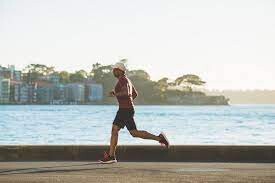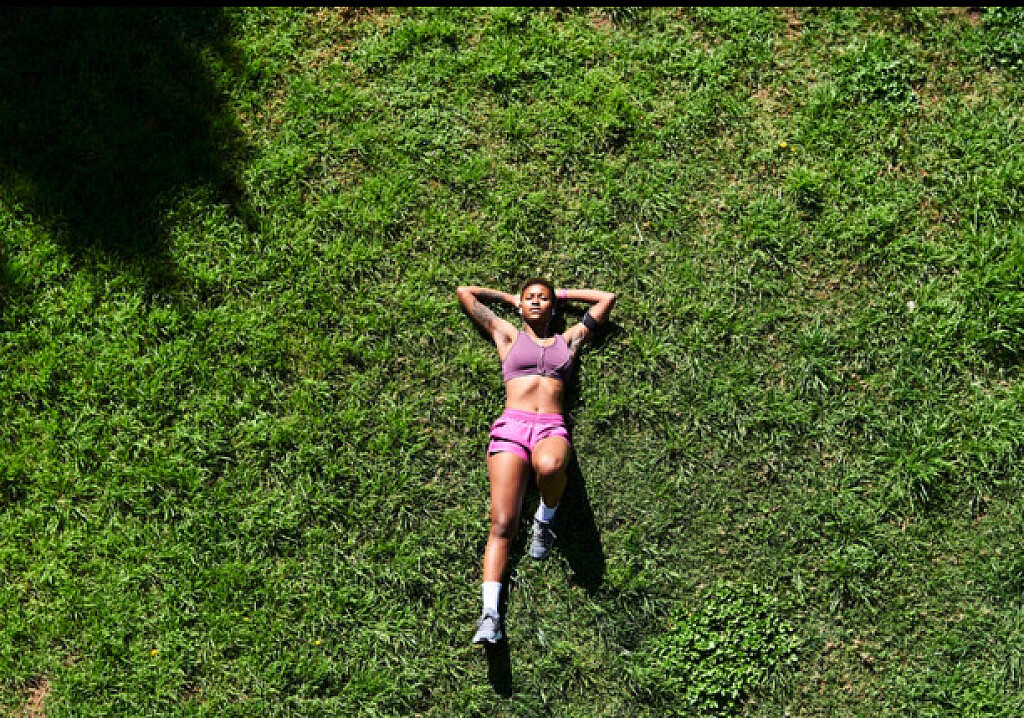Running News Daily
Running News Daily is edited by Bob Anderson. Send your news items to bob@mybestruns.com Advertising opportunities available. Train the Kenyan Way at KATA Kenya and Portugal owned and operated by Bob Anderson. Be sure to catch our movie A Long Run the movie KATA Running Camps and KATA Potato Farms - 31 now open in Kenya! https://kata.ke/
Index to Daily Posts · Sign Up For Updates · Run The World Feed
How Athletes Can Bounce Back After Bed Rest
How Athletes Can Bounce Back After Bed Rest Spending a week in bed, à la John Lennon and Yoko Ono, might sound idyllic. But there’s plenty of research showing that the impact on your fitness and health can be brutal. In one 2016 study, young men who spent a week in bed lost 3.1 pounds of muscle, and their VO2 max and maximum strength declined by 6.4 and 6.9 percent, respectively. People spend months, or even years, trying to make gains of that magnitude, but you can lose it in a week.
The picture may be even worse for well-trained athletes. Studies find that those with the highest initial fitness levels suffer the greatest losses during bed rest. Sometimes there’s no avoiding it, though: surgery, injuries, and illnesses—including, notably, COVID—can confine even the fittest athletes to bed. So a new systematic review in the journal Sports Medicine, from researchers Barry Spiering, Jonathon Weakley, and Iñigo Mujika, takes a closer look at how bed rest affects trained athletes, and how to minimize its negative impacts.

The main finding is easy to sum up. A detailed search of four databases turned up an initial batch of 501 studies looking at fitness losses during bed rest, of which a grand total of zero involved highly trained athletes. This isn’t particularly surprising: if you’re a serious competitive athlete, are you going to volunteer for a study that will probably strip you of months of training gains? Still, Spiering’s main takeaway is that scientists should study this question more. If randomized trials aren’t feasible, it should still be possible to take advantage of situations where athletes are forced to take complete rest, for example after surgery, and do some detailed measurements of how quickly their fitness declines and how long it takes to regain.
In the meantime, the researchers did find seven studies involving athletes classified as “Tier 2: Trained/Developmental,” which is a notch above recreationally active, enabling them to extrapolate some tentative conclusions about what happens to more serious athletes.
One key finding was that endurance starts to decline within about three days. The initial rapid decline is associated with a drop in blood plasma volume, while the subsequent gradual decline reflects physical changes in your heart, circulatory system, and muscles. There’s a small body of literature suggesting that you can fight the initial decline by taking in extra fluid and salt to preserve your plasma volume. The studies use a daily dose of 30 milliliters of water and 0.1 grams of salt for each kilogram of body weight (that’s about two ounces of water per pound), starting a week or more before bed rest starts. The evidence for this is intriguing but not yet definitive.
Muscle strength starts to decline within five days. In this case, there’s an initial rapid decline resulting from neuromuscular changes in how signals travel from the brain to the muscles, then a slower decline as your muscles start to shrink. To fight the neuromuscular decline, you can try motor imagery training, which basically involves imagining yourself doing strength training. As far-fetched as this sounds, there’s a robust body of literature showing that it works, including a Scottish basketball team that did imaginary strength training during the initial phases of the COVID lockdown.
To maintain your muscle mass, there are a bunch of possible tactics. You can have a machine move your limbs for hours at a time, use blood-flow restriction, or apply electrical stimulation to your muscles—which helps stave off muscle wasting even in critically ill patients who are comatose. It’s also crucial to get enough protein, particularly because you’ll likely be eating less than usual while confined to bed. Spiering and his colleagues cite a recommendation of 16.5 grams of essential amino acids plus 30 grams of carbohydrate, three times per day. According to muscle researcher Luc van Loon, the most effective way to stimulate muscle growth and maintenance is the combination of ingesting protein and using your muscles—so if you’re able to get out of bed at all, do it when you’re eating, since even shuffling down the hall to the kitchen will help your muscles make better use of the lunch you eat.
There are some other nuances, like the changes in blood pressure and distribution that result from prolonged bed rest. When you’re standing up, gravity pulls your blood down into your legs. When you’re lying down, it gets redistributed to your torso—and your body eventually gets used to that new normal, so that when you finally get out of bed and gravity kicks in, you get a head rush because you don’t have enough blood pressure to keep your brain supplied with oxygen. One countermeasure borrowed from research into how astronauts handle zero-gravity spaceflight is lower-body negative pressure, a complex procedure that basically involves putting your legs into a specially designed box from which the air is pumped out, drawing blood from the core into the legs and simulating the effects of gravity. This is probably more trouble than it’s worth if you’re just in bed for a week with COVID, but is a cool-sounding idea and could be useful for prolonged bed rest.
The final piece of the puzzle is how long you should expect to take regaining your fitness. Given the absence of studies on competitive athletes, it’s impossible to give any firm answers. Studies on non-athletes suggest that it takes about a week to counter the endurance losses of a two-week bed rest, and two weeks to regain neuromuscular function after a four-week break. But it’s possible that athletes, with their higher initial fitness, might take longer to regain those heights. Spiering and his colleagues give a general guideline of two to four weeks of progressive rehabilitation after a break of up to four weeks, but the details will depend on the circumstances and the reason for the break.
All of this is important to competitive athletes who, for one reason or another, get stuck in bed for a few days or more. But it’s also of interest to anyone who plans to get old. The “catabolic crisis” model of aging suggests that muscle mass doesn’t decline smoothly and gradually; instead, we lose disproportionate amounts during brief periods of total inactivity. Being stuck in bed is never fun, and I can’t say that the prospect of mainlining protein and slogging through sets of imaginary push-ups while I’m there promises to improve the experience. But I’m starting to think that it’s better than the alternative.
by Outside Online
Login to leave a comment




